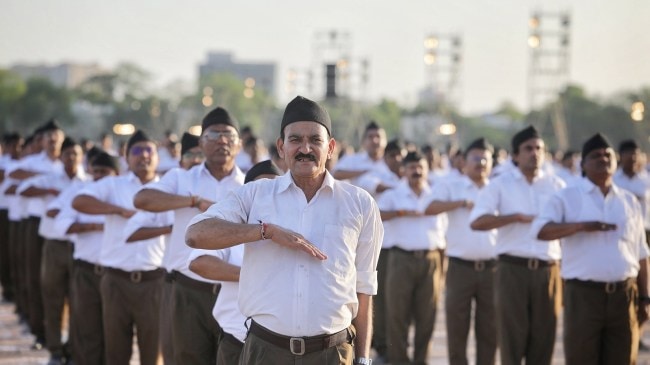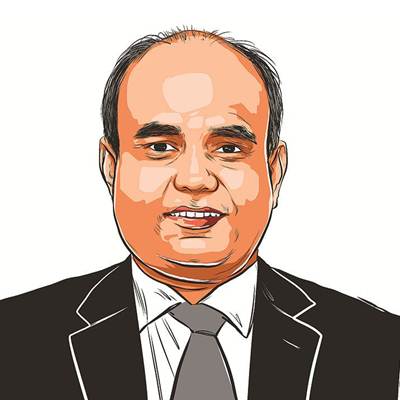Opinion With the RSS, an idea turns 100
The Sangh has endured because it understands that institutions outlast individuals, service outlasts ambition, and civilisations outlast empires
 At the heart of this longevity also lies a vision of Hinduism that the Sangh has articulated consistently.
At the heart of this longevity also lies a vision of Hinduism that the Sangh has articulated consistently. The RSS’s centenary is not merely that of an organisation, but of a civilisational idea that has endured and grown against all odds. For over a millennium, Hindu society, battered by invasions, colonial exploitation, and internal divisions, had not been able to build an institution of scale and continuity. Temples were destroyed, dynasties rose and fell, reform movements flickered and faded. However, over the past 100 years, the RSS has been able to build and sustain itself. Its longevity demands deeper reflection.
Part of the answer lies in the way RSS was conceived. Born in 1925, in the crucible of India’s struggle for independence, it was not tied merely to one charismatic individual. While its founder, K B Hedgewar ji, was an inspiring figure, he deliberately refused to reduce the organisation to a vehicle of his personal authority. Contrast this with many other social movements of the freedom era or even before, which were personality-driven and shaped by the aura of their founders or mentors. They flourished during their leader’s time, but most withered away after that. The RSS, in contrast, derived its strength from a collective spirit. It became an institution. This refusal to be personality-centred explains the RSS’s remarkable growth across 10 decades.
Equally significant has been the Sangh’s steadfastness when it comes to its core ideology. Bans were imposed on it and the organisation was demonised by successive governments and intellectual elites. Yet, the RSS never diluted its foundational belief — Bharat is a civilisational entity rooted in Sanatan Dharma and that its unity is nourished by cultural nationalism. Yes, it has adapted to the demands of changing times, embracing new technology, expanding its reach into new social segments, and inspiring new affiliate organisations. But unlike others who chase acceptability by diluting principles, the RSS never bartered its core ideology for temporary applause. In Sarsanghchalak Mohan Bhagwat ji’s words during his recent lecture series at Vigyan Bhawan, “Acceptability that comes at the cost of abandoning fundamentals is not acceptability — it is extinction.” It’s this refusal to abandon the fundamentals that explains why the RSS commands respect, even from its fiercest critics.
Another dimension of the RSS story that defies precedent is the spirit of selfless service, or seva, that has animated its cadre across six generations. Where else in the world do you see several generations of a family commit themselves to an organisation without any promise of position, salary, or recognition? Lakhs of swayamsevaks spend mornings at the shakha, devote weekends to seva (service), and years of their youth as full-time pracharaks, without expectation of reward, almost always at personal cost. This anonymity has been the Sangh’s greatest strength. In this unstated humility lies perhaps its greatest achievement.
The Sangh has also been unique in cultivating institutions rather than relying on events. Its work in education, tribal welfare, relief during calamities, the empowerment of women and the fight against social ills has been built brick by brick, year after year. The results are not always visible in daily headlines but manifest across decades. Institutions like the Bharatiya Mazdoor Sangh, Vanvasi Kalyan Ashram, Vidya Bharati, and Seva Bharati have grown into large networks serving millions, all without fanfare. The Sangh works in silence, but silence does not speak of its absence — it is a sign of the organisation’s presence in a deeper way.
At the heart of this longevity also lies a vision of Hinduism that the Sangh has articulated consistently. When the RSS speaks of Hinduism or Hindu Rashtra, it is not an exclusionary call, but an encompassing vision of cultural unity. Hindu, in this context, does not denote a sect but a civilisation — an identity that embraces every community which regards Bharat as its motherland and shares its civilisational ethos. Its outlook has always been about integrating. This expansive definition of belonging explains why, despite relentless caricature, the RSS continues to resonate with ordinary people across caste, region, and language.
Finally, what makes the RSS truly exceptional is its foundational wisdom. The RSS has never depended on borrowed strength or imported cadre. On the contrary, it is the RSS that lends swayamsevaks to organisations that ask for it, never the other way around. The RSS’s strength comes from within. This belief in inculcating its inner strength was the same when the RSS was just a handful of people strong as it is now, when its cadre strength is in the millions. Any society can regenerate and rise only when it starts believing in its own strength — that this is our time; that we may face hardships on the way, but if we persist, we can achieve whatever we want and change the course of history. Prime Minister Narendra Modi, himself a lifelong swayamsevak, captured the essence of the Sangh’s appeal in his speech while releasing a postage stamp and coin to commemorate 100 years of the RSS. He said, “The RSS lasts because it epitomises the spirit of the ordinary Indian to do extraordinary deeds.”
As the Sangh enters its second century, its greatest challenge will be to remain true to this balance: Never abandoning fundamentals, yet never becoming fossilised. The Sangh has endured 100 years because it understood something simple yet profound — that institutions outlast individuals, service outlasts ambition, and civilisations outlast empires. That, in essence, is the RSS’s lesson for India as it looks to the next 100 years.
The writer is CEO, Bluekraft Digital Foundation and was earlier director (content), MyGov




